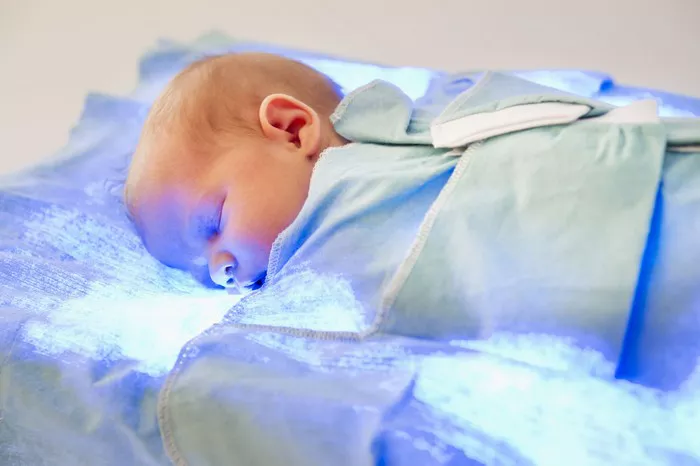Jaundice, a condition characterized by yellowing of the skin and eyes due to elevated bilirubin levels in the blood, is a common occurrence in newborns. While it typically resolves on its own within a few days to weeks, parents often wonder whether jaundice can return after initial treatment. This article delves into the complexities of neonatal jaundice, exploring the causes, risk factors, treatment options, and the likelihood of recurrence.
Understanding Neonatal Jaundice
Neonatal jaundice affects up to 60% of full-term newborns and an even higher percentage of premature infants. It occurs when there is an accumulation of bilirubin, a yellow pigment produced from the breakdown of red blood cells, in the bloodstream. Bilirubin is normally processed by the liver and excreted from the body through stool. However, in newborns, the liver is often immature and may not efficiently process bilirubin, leading to its buildup and the characteristic yellowish tint in the skin and eyes.
Causes of Neonatal Jaundice
Several factors contribute to the development of jaundice in newborns:
Physiological Jaundice: This is the most common type and occurs due to the normal breakdown of red blood cells and the liver’s temporary inability to process bilirubin effectively.
Breastfeeding Jaundice: Occurs when breastfeeding is not well-established, leading to inadequate milk intake and subsequent dehydration, which can exacerbate jaundice.
Breast Milk Jaundice: A less common type where certain substances in breast milk interfere with bilirubin metabolism, prolonging its presence in the bloodstream.
Blood Group Incompatibility: If the baby’s blood type is incompatible with that of the mother (e.g., Rh or ABO incompatibility), the mother’s antibodies can cause increased breakdown of red blood cells, leading to higher bilirubin levels.
Liver or Red Blood Cell Disorders: Rarely, underlying conditions affecting the liver or red blood cells can contribute to jaundice.
Risk Factors
Several factors increase the risk of neonatal jaundice:
Prematurity: Babies born before 37 weeks may have underdeveloped livers.
Bruising or Bleeding: Conditions causing bruising or bleeding increase the breakdown of red blood cells.
East Asian or Mediterranean Descent: These ethnicities are more prone to genetic conditions that affect bilirubin metabolism.
Family History: Previous siblings with jaundice may indicate a genetic predisposition.
Exclusive Breastfeeding: Without adequate milk intake, bilirubin elimination can be slowed.
Treatment Options for Neonatal Jaundice
The management of neonatal jaundice depends on its severity and underlying cause. Treatment aims to lower bilirubin levels to prevent potential complications such as kernicterus, a rare but serious condition where bilirubin deposits in the brain.
Phototherapy
Phototherapy is the primary treatment for neonatal jaundice. The baby is placed under special blue lights that help break down bilirubin in the skin so that it can be excreted more easily. Phototherapy is non-invasive and generally very effective.
Exchange Transfusion
In severe cases or when phototherapy fails to lower bilirubin levels adequately, an exchange transfusion may be necessary. This involves gradually removing small amounts of the baby’s blood and replacing it with donor blood, effectively reducing the amount of bilirubin.
Monitoring and Supportive Care
Close monitoring of bilirubin levels through blood tests and ensuring adequate hydration and nutrition are crucial aspects of managing neonatal jaundice. If breastfeeding is a factor, lactation support and ensuring proper feeding techniques are essential.
Can Jaundice Return in Newborns?
The likelihood of jaundice recurring in newborns depends on several factors, including the underlying cause and effectiveness of initial treatment.
Physiological Jaundice
Physiological jaundice typically peaks around the third to fifth day of life and resolves within a week or two as the baby’s liver matures and becomes more efficient at processing bilirubin. Once resolved, physiological jaundice does not typically come back.
Breastfeeding Jaundice
Breastfeeding jaundice can recur if breastfeeding issues persist, such as inadequate milk intake leading to dehydration and reduced bilirubin excretion. Addressing breastfeeding difficulties with lactation support and ensuring proper feeding techniques usually resolves this type of jaundice.
Breast Milk Jaundice
Breast milk jaundice may persist for several weeks but usually resolves on its own by the time the baby is one to two months old. In rare cases, it can last longer, but it does not usually recur with subsequent feedings of breast milk.
See Also: When is Jaundice in Newborns Dangerous?
Blood Group Incompatibility
If jaundice is due to blood group incompatibility (e.g., Rh or ABO incompatibility), subsequent pregnancies with the same incompatibility may lead to jaundice in subsequent newborns. However, this can be managed with appropriate monitoring and treatment based on the severity.
Prevention Strategies
While neonatal jaundice cannot always be prevented, several strategies can help reduce its severity or risk:
Early and Regular Feeding: Ensuring adequate feeding, especially in the first few days after birth, can help prevent dehydration and reduce the risk of jaundice.
Monitoring Bilirubin Levels: Regular monitoring of bilirubin levels, especially in high-risk infants, allows for early intervention if levels become elevated.
Addressing Breastfeeding Issues: Providing support for breastfeeding mothers and ensuring proper latch and feeding techniques can help prevent breastfeeding-related jaundice.
Rh Immunoglobulin (RhIg) Injections: Administering RhIg to Rh-negative mothers can prevent the formation of antibodies that cause hemolytic disease in subsequent pregnancies.
Conclusion
Neonatal jaundice is a common and usually benign condition in newborns, often resolving without intervention. Understanding the different types of jaundice, their causes, and appropriate management strategies is crucial for parents and healthcare providers alike. While jaundice can recur in some cases, particularly if underlying factors persist, prompt diagnosis and treatment typically lead to successful outcomes. By being aware of risk factors and early signs, parents can work with healthcare professionals to ensure their newborns receive appropriate care and monitoring, reducing the likelihood of complications associated with elevated bilirubin levels.


